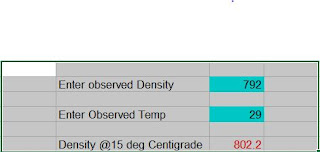- Myth of restriction of Barometer Pressure Correction formula in Flash Point test methods
- Myth of restriction of Barometer Pressure Correction formula in Flash Point test methods
The flash point test methods practiced in India as per BIS 1448- P:20, etc places restriction of following Barometer Correction FormulaCorrected Flash Point = C + 0.25 ( 101.3 - P)
where C = Observed Flash Point in deg C
P = Observed Barometer reading, kPa
The current BIS test method P : 20, Determination of Flash Point by Abel Apparatus 1998 reaffirmed July 2013 states on page no. 7:
This correction is applicable over the range 98 to 105 kPa
One of Energy Institute, UK , ASTM D 02 , EN ISO joint research document on standardization of Flash Point test method, Aug 2010, also specify following at 20 on page no. 13
NOTE This equation is strictly correct only within the barometric pressure range from 98,0 kPa to 104,7 kPa.
The same above restriction is also seen on Joint test Abel Flash Point IP 170/09, ISO 13736, on page 170.5.10, Joint test Pensky & Martin Flash Point method IP 34, ISO 2719 and Joint Cleveland Flash Point IP 36, ISO 2592 as shown below:
Despite the restriction of Barometer pressure from 98 to 105 kPa, the above formula was when applied to much lower pressure even upto 51 kPa, the correction gives value almost matching for all 12 high altitude locations flash point carried out as given in last blog, This higher altitude flash point study was done in 1999-2001 period. Thus the restriction of limits in barometer pressure readings do not hold good.
Bureau of Indian Standards, New Delhi need to update the test methods removing the restriction of Barometer Pressure limits.
Energy Institute, UK, ISO , ASTM may like to take a note of above.
So now accepting that at higher altitude, the standard pressure correction formula holds, what is the Flash Point of a Kerosene sample having FP= 38 Deg C at sea Level when tested on:
a) Mt Everest Summit ? b) Moon
Hope you will enjoy answers to above in coming blog shortly.


Comments
As the air gets warmer, the molecules in it spread out and make the atmosphere deeper.
Whats-more, the way the earth rotates means there is less air over the poles to begin with, and more air is concentrated around equator generally and specific at altitude, explains why the air has relatively more oxygen at altitude at the Everest location which is nearby equator.